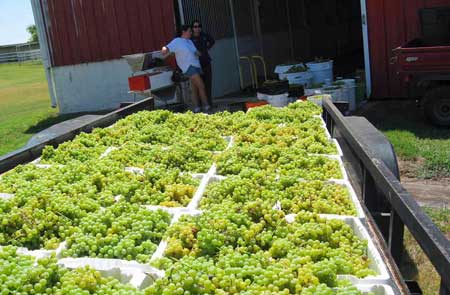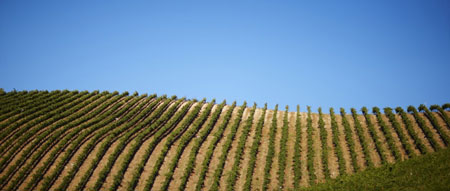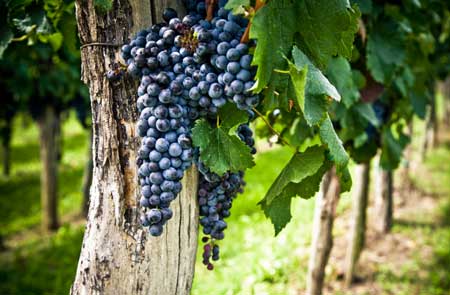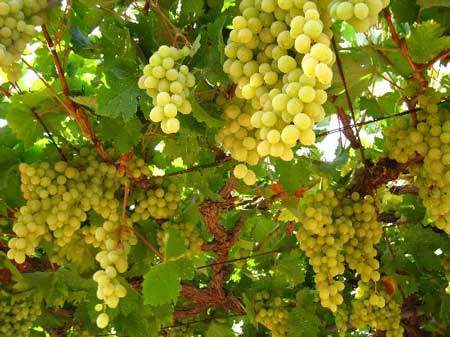
Principal Factors in the Control of the Vineyard Manager that Affect Grape Quality
(Submitted by Russ Kane with MW Application, Theory Assignment- Question 5; August 8, 2011). Length: 1000 words maximum (997 word actual).
Factors under the vineyard manager’s (VM’s) direct control that can affect grape quality involve two major scenarios: (a) vineyard planning and (b) vineyard operation.
In the former case, the vineyard manager (VM) is responsible for site selection, vineyard layout (spacing, orientation, irrigation, trellising) and selection of the varietals for optimal quality/profitability. For grape quality, the VM will have to evaluate the sites and determine which is best suited for his varietal selection, or which varietals are best suited for the available site. The factors in site selection relating to wine quality include: local climatic conditions (temperature, fog, rain, frost), soil characteristics and aspect of the land (which will influence drainage, vine nutrition and vigor), and water availability. Often, the most important decision that the VM will make determining consistency of grape quality year in-and-out is the LOCATION of the vineyard site.

A large privately owned vineyard in Texas was started by a major grape grower located in California’s south central coast. The effort was spearheaded by his local VM whose site selection was based more on personal convenience than consideration of factors that ultimately determined the quality of the grapes. Here, the quality of the grapes and ultimately the viability of the vineyard were compromised as the site was plagued by (a) frost damage (being in the low spot in the valley), (b) lack of river water for irrigation during the peak summer months, (c) overhead sprinklers caused high disease pressure, and (d) the soil was conducive to diseases, all leading to declining grape quality.
The other factors under control of the VM that determine grape quality are those involved in the operation of the vineyard: Pruning is critical to quality grape production and is used to select the bearing spurs and number of buds, thus manipulate the quantity and quantity of fruit. For example, a special pruning practice is used in areas where late spring frost can reduce harvest yields and degrade grape quality from secondary buds that ripening unevenly. The VM can require the use of a double pruning method that involves a rough pruning of the cane tips during winter which promotes initial growth at the ends of the canes not around the basal buds. Next, a final pruning down to the producing buds is delayed into spring for varietals such as Chardonnay and Muscat Canelli that tend to bud earliest. This two-step procedure delays budding and improves yield and uniformity of the ripening of the grapes at harvest. Other pruning techniques such as shoot positioning and cane and leaf pruning affect the availability of sunlight onto the grapes and communication of sprays into the canopy. Consequently, pruning techniques are often a significant operational practice affecting vine balance (fruit versus leaf production). The VM uses these techniques to ensure the crop load can be accommodated assuring quality grapes at harvest. Pruning may also include “green harvest” whereby the crop load is reduced summarily so that the vines can work more efficiently to provide adequate carbohydrates used to develop the sugar in the grapes.

Controlled irrigation is often used by the VM to grow quality grapes and depends on many factors (including rainfall, density of planting, size of canopy and crop load). The end result is to provide water as required to support balanced grape and canopy growth, but not to promote excessive vine growth. Most importantly, the VM needs to monitor/adjust water in the later stage of the season so that the sugars and acids in the ripening grapes remain concentrated resulting in optimum grape quality.
The VM also needs to assess the nutrition provided by the vineyard soil and provide augmentation through application of minerals and fertilization if deficiencies are detected. Such conditions have the potential for detrimental effects on vine growth and crop ripeness. The VM’s job includes sampling soil and vine (e.g. Petiole) tissue. The tissue samples are indicators of the vine’s zinc, boron, potassium and magnesium levels and are the basis for fertilizer applications, if required. Often, the drip irrigation system is used to deliver supplemental feeding which will enhance vine health and improve its ability to effectively ripen a high quality crop. Low plant nitrogen levels can impose deficiency of nitrogen in the harvested grapes resulting in impediment of successful and complete fermentation. The VM also needs to assess damage from fungus, rots, and work to minimize their extent, through vineyard housekeeping, spray programs and irrigation control. Unhealthy clusters and unripe grapes need to be dropped in an effort to maximum grape quality.
The single most important operational factor the VM has to assess is the harvest date. This decision should be based on progressive recordkeeping that shows the rate of development of the grapes. The development of sugars in the grapes (in Brix readings) is usually the primary parameter. It provides a trend that the VM can use to predict when the desired harvest Brix will be achieved. However, this is only part of the analysis of grape quality. The VM must assess the Brix in combination with the acidity (both pH and titratable acidity) because acids levels drop as harvest approaches. Methodologies include the Brix, TA ratio or Brix times pH, and multivariate schemes that also include physiological parameters. In the final analysis, the VM has to provide grapes with specified Brix with sufficient acidity and mature aromatic characteristics.

The VM must also coordinate the harvesting/post-harvest activities to maintain the quality of the harvested grapes is not degraded. Many wineries located in central/eastern Texas utilize grapes from Texas high plains vineyards. The harvest period usually takes place while daytime temperatures are still high. The VM needs to schedule harvesting in the cool of the night and ensure that the grape quality is not degraded in transit over long distances by (a) interspersing the harvested grapes with dry ice in the bins and shipping the grapes in refrigerated trucks, or (b) use of a local crush facility where the must/juice is chilled and transported in insulated tanks.
P.S. Thanks to the Texas winegrowers with which I communicated. These discussions have helped to prioritize and assess these parameters and meld them with my independent study. I am sure that there is much more than I could possibly hope to say in my 997 word essay.


Russ: I noted a typo in the document where you used “MV”. I think you meant to use “VM”
A sharp eye Doctor Bobby! Got it fixed.
Thanks,
Russ